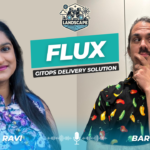In this episode of The Landscape, we spoke with Danielle Tal, Product Manager at Microsoft, about Flatcar Container Linux—a secure, minimal, and immutable Linux distribution optimized for container workloads. Danielle highlighted Flatcar’s unique approach to simplifying security updates, automating OS maintenance, and supporting production-grade deployments in modern cloud environments.
What you will learn in this episode:
- Flatcar’s Key Features: How its declarative configuration model and automated updates streamline operations.
- Release Channels Explained: From Alpha to LTS, a channel for every use case, from testing to production stability.
- Security by Design: Why Flatcar’s immutability and focus on compliance make it a strong choice for enterprises.
- End-User Success Stories: How organizations use Flatcar to simplify infrastructure and secure workloads.
- Getting Involved: Ways to contribute to the project and participate in its open, community-driven development.
This episode is sponsored by OVHcloud.
In this episode of The Landscape, I had the opportunity to speak with Danielle Tal, a Product Manager at Microsoft, about Flatcar Container Linux—a secure, minimal, and immutable Linux distribution tailored for container workloads. Designed as a streamlined alternative to traditional server operating systems, Flatcar focuses on stability, reliability, and efficiency.
Flatcar is a popular choice for modern cloud environments, thanks to its approach to immutability and automated updates, which support production-grade deployments.
This episode is brought to you by OVHcloud, the global cloud provider delivering industry-leading performance and cost-effective solutions. From managed Kubernetes to private registries, OVHcloud has the cloud-native tools you need. OVHcloud: The world needs different.
Danielle Tal:
Hi, my name is Danielle Tal, and I’m a Product Manager for Flatcar Container Linux at Microsoft.
Bart:
For people unfamiliar with Flatcar, what problem does it solve?
Danielle:
Flatcar is a container-optimized Linux distribution. It allows you to focus on your applications while automating operating system security updates and maintenance. Using a declarative configuration file, you set it up once, and it runs seamlessly. Our goal is to be reliable and “boring,” much like plumbing—you shouldn’t have to think about it; it just works.
Bart:
Can you give us a little background on the Flatcar project?
Danielle:
Flatcar started about five years ago as a friendly fork of CoreOS. Since then, we’ve maintained four release channels: Alpha, Beta, Stable, and LTS.
- Alpha: For testing new features.
- Beta: For deploying canaries in your environment to catch configuration-specific issues.
- Stable: After rigorous testing, fixes from Beta are promoted here.
- LTS: Long-term support for production workloads.
We run extensive multi-vendor tests—around 100 per release—but encourage users to test in their environments and report any issues.
Bart:
Who are the end users of Flatcar?
Danielle:
Flatcar is open source, vendor-neutral, and part of CNCF Incubation. End users include enterprises looking to simplify their operations, but it’s versatile enough for home labs and experimental use cases. Cloudbase, one of the main maintainers, also provides enterprise support, covering a wide range of use cases.
Bart:
How did you get involved in the project?
Danielle:
I started at Kinvolk, a Berlin-based company known for its technical expertise. I loved the team and the open-source space. As a woman in tech, I’ve also found it rewarding to bring more diversity to this landscape.
Bart:
What alternatives exist, and how does Flatcar differ?
Danielle:
There are other container-optimized Linux distributions, such as CRI-O and others in the CNCF Sandbox. Flatcar stands out with its declarative configuration model and unique features like system extensions and decoupled Kubernetes upgrades. These overlays allow users to maintain flexibility while keeping the base OS immutable and secure.
Bart:
What can we expect from Flatcar in the coming months?
Danielle:
As part of CNCF, we aim to grow the community and attract more contributors. Our roadmap includes features like compliance enhancements and secure boot support. By collaborating with the community, we can accelerate these developments.
We host bi-weekly meetings, office hours, and developer syncs. All work is done in the open—you’ll find our release coordination, GitHub board, and discussions available to the public. We encourage contributions and feedback to improve Flatcar together.
Bart:
Thank you so much for your insights, Danielle!
Danielle:
Thank you! We look forward to hearing from the community.


